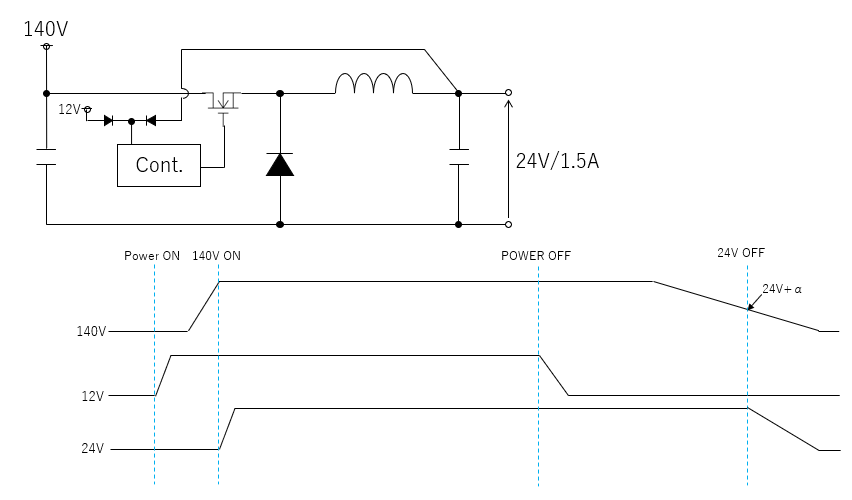Other Parts Discussed in Thread: PMP10739, PMP
Hi,
I have been asked by a customer if there is a device that can support the following specifications:
As for the configuration, I think the reference design PMP10739 using UCC28700 is good.
Is it possible to satisfy customer specifications with this configuration?
Also, it would be helpful if you could tell me any other good configurations.
(specification)
VIN : 140V DC
VOUT : 24V
IOUT : 1.5A
* Composed of non-isolated.
* Apply 12V from outside. There is a power supply sequence in this case.


